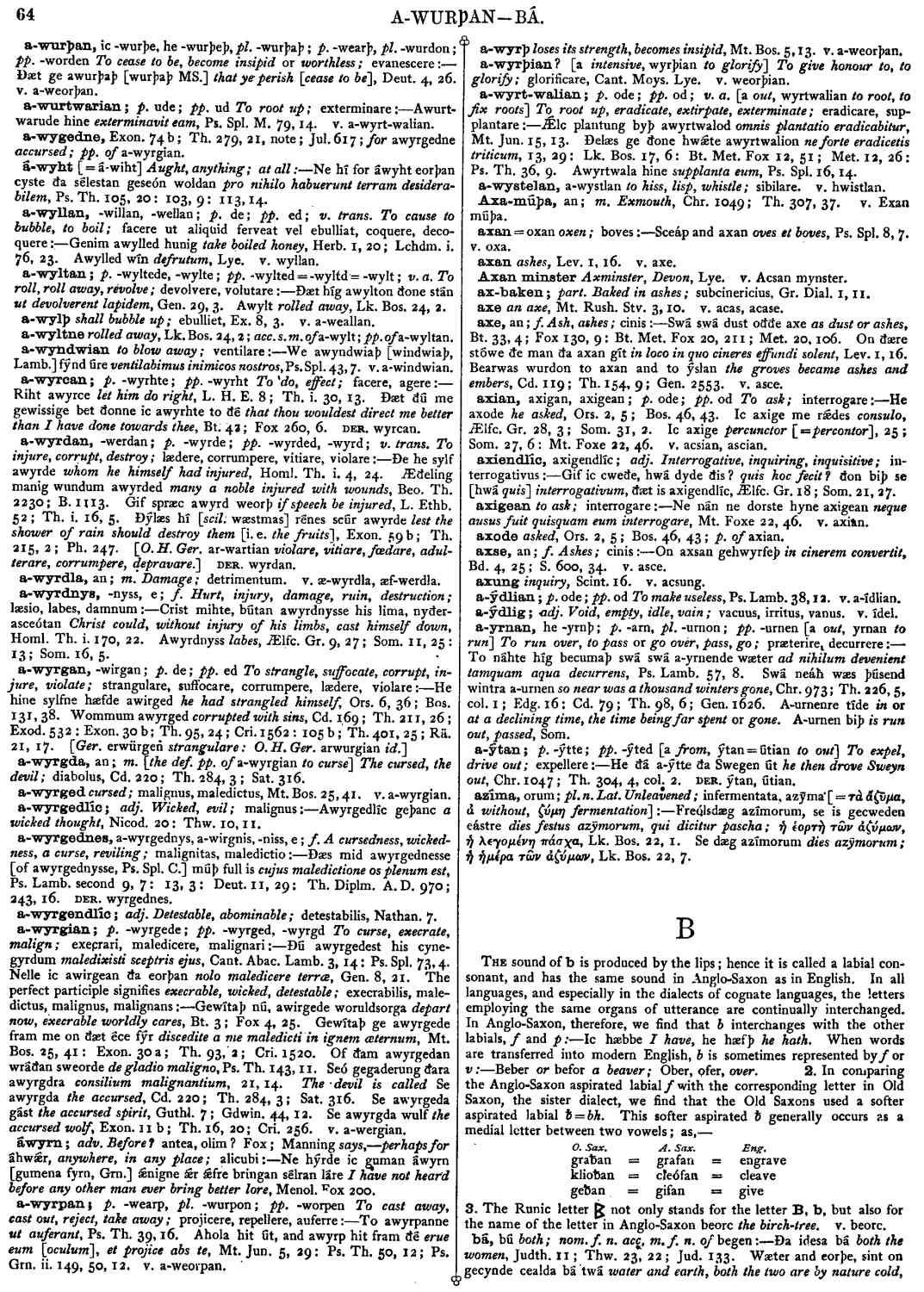B
- Ic hæbbe I have, he hæfþ he hath. When words are transferred into modern English, b is sometimes represented by f or v :-- Beber or befor a beaver; Ober, ofer, over.
Bosworth, Joseph. “B.” In An Anglo-Saxon Dictionary Online, edited by Thomas Northcote Toller, Christ Sean, and Ondřej Tichy. Prague: Faculty of Arts, Charles University, 2014. https://bosworthtoller.com/2811.
Checked: 0